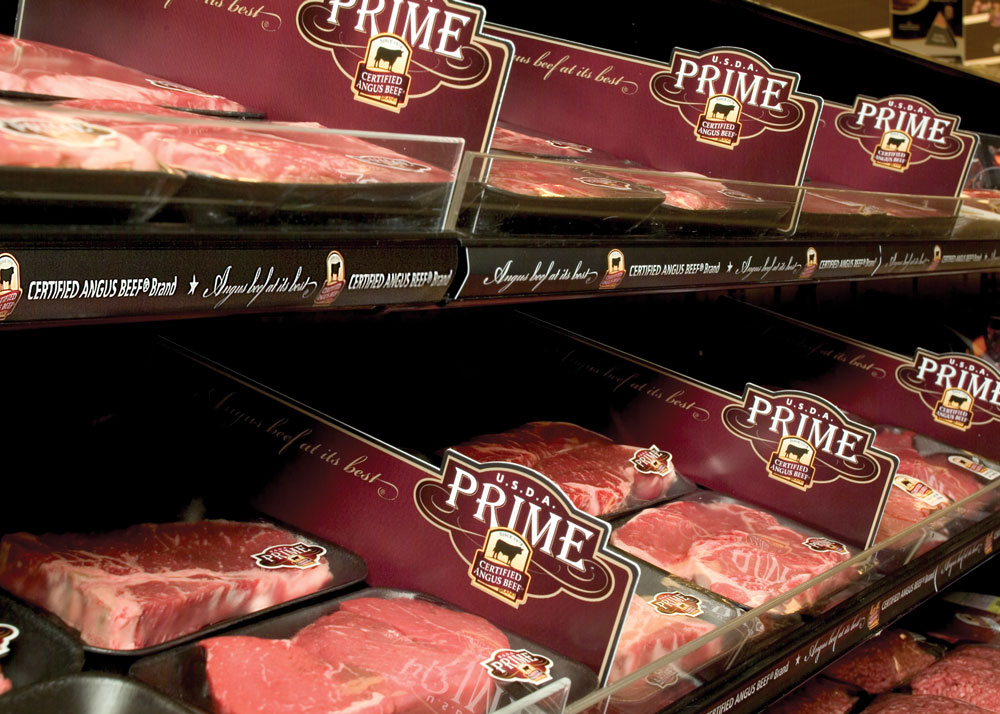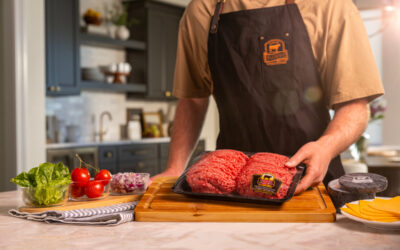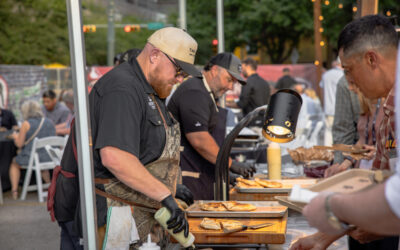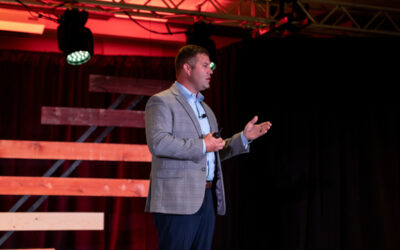
Beef: the main feature
by Miranda Reiman
Not long ago, the news was sharply higher beef prices in a still-recovering economy. Industry insiders wondered how consumers would respond. Amid the talk of fewer retail features and penny-conscious shoppers, people still turned to beef.
“Sometimes we all get more worried about those price points than maybe the consumer does,” said Randy Blach, CattleFax senior market analyst.
He put it in perspective during the Certified Angus Beef ® (CAB®) brand annual conference last fall, noting that the average consumer has to work 12 to 15 minutes to pay for a pound of Choice beef today. That’s down from more than 30 minutes in the 1970s and ’80s.
Blach said that helps explain why high-quality beef demand continued to rise, even during the steep increase in prices.
“We’re producing the highest quality product that we have in decades,” he said. “Why do we see these millennials coming back to meat, coming back to beef? Because it’s good.”
As prices trended lower last fall, retailers were quick to respond.
Steve Ringle, CAB director of business development, tracks the ad features of many regional and national retailers. Most of the brand’s volume sells because of what’s on the front page of that week’s newspaper circulars.
“We can be in a 200-store retail chain each and every week, but we don’t see any real movement until we’re in the ad. That’s what drives volume,” he says. “That’s what takes a trickle and makes it a flood.”
Ringle credits weekly promotions with helping the brand reach 36.8 million pounds of sales last October, a 29.5% increase compared to October 2014.
“As the market softens, so does everything else,” he said. “Boxed beef prices began to decline and our retail licensee base responded. From middle meats to ends and grinds, it’s all the way across the board.”

Using a snapshot from that October example, ad features increased from 73 in 2014 to 109 last year. Those are not paid placements, but rather business decisions made by retail chains, Ringle said.
In 2014, only five of those ads were in the “sweet spot,” he said: a listed price of $2.99 or lower or a special offer like buy-one-get-one. That number jumped to 19 during October last year.
“We can attribute our increase in sales not only to the number of features we saw, but also the quality of those features,” Ringle said.
During this expansion phase, the industry has work to do to take back the front page.
“We lost a tremendous lot of ground when cattle prices shot way up,” he says.
But things are already looking brighter. Thanks especially to Christmas season rib features, the CAB brand is up nearly 15 million pounds in the first quarter of the fiscal year, compared to October through December of 2014.
Although lower cattle prices aren’t seen as good news across cattle country, there is a silver lining when it comes to moving meat.
“The millennials want more high-quality protein in their diets,” Blach said. “That’s an opportunity for each and every one of us.”
You may also like
Success, Despite Challenges
Today’s market is complex and competitive. The collective effort of stakeholders across the supply chain positions Certified Angus Beef to meet the record demand for premium beef moving forward. Signals across the beef industry are clear and Angus farmers and ranchers seeking high-quality genetics that deliver premium beef are producing a product in high demand.
Keep the Supply Coming
A record-high 800 registrants from 17 countries gathered in Austin, Texas, to learn more about CAB, become inspired by the culinary work of chefs and pitmasters, and celebrate sales and production success. But at the forefront: supply and demand, a reflection of the chaotic past year, and preparing for what’s ahead.
Consumer Demand, Power of Quality
Demand for high-quality beef persists. But with that demand comes challenges. From tight cattle supplies to higher costs and increasing pressure on retailers to deliver a consistent eating experience, the pressure is on. David O’Diam, CAB VP of retail, addressed the current retail beef environment, highlighting both opportunities and challenges in today’s marketplace.



